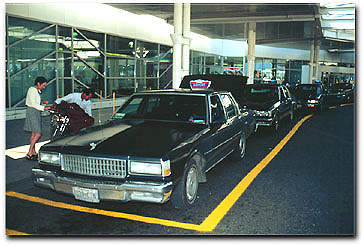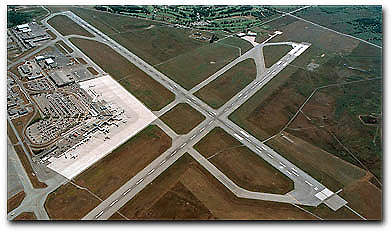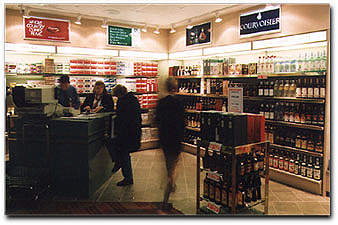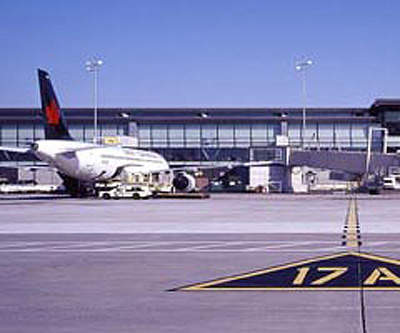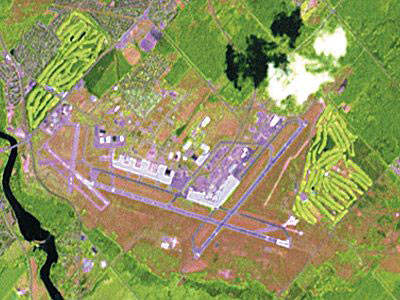The Ottawa Macdonald-Cartier International Airport is named after two eminent Canadian Statesmen – Sir John A Macdonald and Sir George-Étienne Cartier. The airport is located 10km south of the city centre of Ottawa and it is the sixth busiest in Canada by passenger traffic, and the eighth busiest by aircraft movements. It handled 3.7 million passengers in 2005.
In 2001 the Ottawa Macdonald-Cartier International Airport Authority (OMCIAA) announced the decision to proceed with a major expansion plan. The expansion was to intially include the construction of a new passenger terminal building, a renovated parking structure and extensive airside and groundside improvements.
Construction began in the first quarter of 2001 and the project was completed by 2003. The new terminal building opened in the third quarter of 2003, six months ahead of schedule. The airport’s board of directors approved a further expansion of the airport’s passenger terminal in April 2006.
The new addition will add over 7,000m² of space and will have 12 new gates and seven jetways. The old terminal, which is still used during peak periods, will be demolished once the new addition is ready. The airport hopes that the new addition will be completed in 2008.
LOCAL ECONOMY
The airport is considered to be a major contributor to the local economy both in terms of economic impact and job creation. The OMCIAA released a study in October 2000 that calculated the total regional economic impact of the airport at about $1 million. The airport also allows local businesses to increase their economic output by offering a convenient connection to the global marketplace. The management opinion is that the airport is growing because the region it serves is growing and the region’s growth is facilitated by a better service.
The project is designed to meet today’s demand but the terminal design has been chosen to respond to future growth in the region. As passenger demand and airline services dictate, a second phase of expansion is tentatively planned for completion by 2010. A third phase is slated for 2014, as required.
The airport has also announced a rejuvenation programme for the existing building to ensure a proper service to its customers throughout the construction period. These improvements will remain until the airport activates phase II.
NEW PASSENGER TERMINAL
Ottawa’s new three-level passenger terminal building opened in 2003 is linked to the second level of the existing terminal by way of a passenger bridge. Canadian customs and the US pre-clearance facilities have been expanded to accommodate growth in trans-border air traffic. Fifteen new gates have been added to the airport’s existing 12 arrival and departure gates.
Updated baggage handling facilities, expanded airside aprons to ease congestion on taxiways, a new de-icing facility for aircraft, climate-controlled access to the passenger terminal from an above-ground parking garage and a realigned airport parkway approach were constructed during this first phase of expansion.
Improvements completed include the realignment of counter services to make room for new regional carriers, including Westjet, Canjet, Royal and eventually Roots, expanded pre-clearance facilities and a more luxurious and spacious first-class lounge. The Ottawa Airport received awards in two categories, both of which included significant and worthy construction projects from Canada and the US.
GENIVAR, in partnership with Brisbin Brook Beynon, designed the terminal’s stylised structural components to create an elegant, efficient and pleasing avant-garde roof design. The project management was the remit of the MRM project management team which was a very successful joint venture between Marshall Macklin Monaghan Limited of Toronto and J L Richards and Associates Limited. The team managed the entire program from its inception to completion, delivering within budget and six months early.
SECOND PHASE AIRPORT EXPANSION
In April 2006 the OMCIAA announced that the board of directors had approved the $95m Airport Expansion Program phase II (AEP II). In 2005, the Authority had given permission to start designing the expansion to the domestic and international holdroom at the south end of the terminal. Expansion will add 12 gates, seven passenger bridges and more than 7,000m² of holdroom space.
The architects and designers have incorporated many of the same elements and finishes that are prevalent in the terminal into the expanded space for continuity and flow. An extensive recycling program will be adopted for this project; approximately 75% of the old terminal, which will eventually be demolished, will be reused.
There are also plans to incorporate British Columbia fir timbers from a WWII hangar that is currently being demolished; the wood will add warmth and charm to the space and will offer a constant reminder of the airport’s rich military history.
The project is expected to finish in 2008 and will be paid for without the use of taxpayer’s money. Project financing will be repaid from the airport improvement fee introduced by the Ottawa Airport Authority in September 1999. The Ottawa Macdonald-Cartier International Airport Authority (OMCIAA) generated revenue of $72.5m in 2005, compared to $69.6m in 2004 and $63.3m in 2003.
PARKING FACILITY AND PARKADE EXPANSION
The OMCIAA awarded the design and construction of the new $25m parking facility to EllisDon Corporation on 19 October 2001. The facility broke ground in early March 2002 with completion in August 2003.
The post-tensioned, cast-in-place concrete structure now houses approximately 1,700 cars on four levels. The first floor features short-term parking, an operations office and washrooms, plus offices and space for five rental car agencies with private parking for 218 vehicles.
Levels 2–4 are identical, but for a small difference on the third floor level, which features special parking for preferred business customers. These spaces allow travellers easier access to the above-grade pedestrian bridges linking the parking garage to the express departure area of the passenger terminal building.
The new garage was designed by the EllisDon team, which included IBI Group Architects, Halsall (structural engineers) and Goodkey Weed Mark (electrical and mechanical).
In April 2005 the OMCIAA awarded a contract to PCL Constructors Canada Inc to expand the parkade facility. The $12m contract was completed by the second quarter of 2006, and has provided the airport with 900 more parking spaces.
COSTS
Of the $300m expansion costs, $140m was for the new terminal, $36.5m for the parking garage and other services, $22.5m for the new de-icing facility and other equipment, and $101m for fees, contingency costs and various expenses.
Under the proposed second stage of expansion an additional $40m would be spent between 2004 and 2010 on demolishing the present terminal and extending the new one. The second phase expansion will cost $95m.
LEAD CONTRACTORS
The lead contractor is PLC Construction Group Inc, in Ottawa. The architecture and engineering contract has been awarded to YOW Consultants, an alliance between the Ottawa firm, Brisbin Brook Branyon (BBB) and Architecture Planning Interiors Inc, of Vancouver.

